Installing a GasIT Self-Refillable LPG System
Zagan the motorhome now sports a GasIT self-refillable LPG system. With it we can replenish his habitation gas system from filling stations which sell LPG/Autogas across Europe (there are quite a few of them). Dave, our previous Hymer B544, had such a system installed, albeit a pretty old contraption compared to the system we just installed. It worked flawlessly and we filled it in a fair few countries, including Tunisia, with no problems (other than being muppets with the pump sometimes…). The only country we couldn’t fill up was Morocco, as they don’t have LPG fill stations. Not an issue over there as the tank held 30 litres of gas, which was plenty, since we were on campsites almost of the time with 230v(ish) hook-up.
I installed the GasIT system myself. I’m not a gas professional, or certified in gas installation in any way, but I do consider myself to be a competent DIY installer. I spent a few weeks thinking about/researching how to get a self-refillable LPG system on Zagan, checking out the main players: GasIT, Alugas and Gaslow. I pondered:
- Whether to get an underslung tank and decided against it (floor too low, and we already have a locker we can use),
- Whether to get an in-locker tank or two bottles (a single tank would have been simpler, but wouldn’t physically fit),
- How best to fit the filler (in-locker, external in the door or external in the van skirt),
- Whether two 11Kg bottles would fit (I emailed photos to GasIT of the locker with a tape measure across it; they advised one 11Kg and one 6Kg).
I read through the Gaslow install instructions and in the end we went for this set-up:
- A GasIT 11Kg and 6Kg twin bottle with Gaslow auto changeover valve (which we already had). We chose GasIT as the quality of the kit looked the same across the board, but GasIT were cheaper.
- A JIC Square angled fill valve, which we needed to keep the area of the external filler down to a minimum.
- A set of three European fill adaptors, for laid-back filling in exotic foreign petrol stations.
Including the high pressure hoses and delivery (but excluding the changeover valve), the kit cost £341.80. I filmed the install (below). Once again pls note that I’m no pro! As far as I know the only ‘problem’ with the install below is the fact the bottles are only strapped once, when they should be strapped at both top and bottom. The installation was straightforward. I took my time trying different bottle orientations, triple checking everything, filming bits and bobs, and the end-to-end install took about 3 hours.
The next job is to fill the system and leak test it each of the joints using the spray GasIT supplied. Once we’ve done that, and used it a few times, I’ll pop an update on this post to say how we’re getting on with it.
Update 18 Aug: just popped to the local BP garage and nervously popped 10 litres in, with both bottles already off at the off take valves. No massive hissing of escaping gas. Phew! Drove to a lay bye, opened the valves, still no hissing of gas. Sprayed all my joints and those made by GasIT with the leak detection liquid they supply. No bubbles. Spray them all again, still no bubbles. Turn on and light the cooker. All good. Only thing we’ve spotted is the gauges have both remained on red, but maybe the tanks need more gas? Plan now to use the van at a Britstop in Skegness this weekend, and leak test it again while we’re there, then do a full test and make sure the 80% cut off valves work.
Update 20 August 2015: Wayhey! Our fabulous friend Matt, a Gas Safe Engineer, who owns Kimberley Fires and Stoves (the place where we got our wood burner from) has loaned Ju a gas detector. Just sniffed out Zagan’s system with it and not a single teeny weeny leak detected!
Update October 2017 : While touring Europe we found that we got a slight smell of gas in the kitchen area when the bottles switched over. When we returned to the UK we had a Gas Safe Registered Engineer check all of our gas systems. After a thorough check he found no problems and issued Zagan a Gas Certificate to give us peace of mind. With hindsight, we should probably have had the system checked after we had fitted it.
Cheers, Jay
New to motorhome life,
planning your own motorhome adventure or
looking for the perfect gift for the motorhomer in your life?
Check out our OurTour range of books.

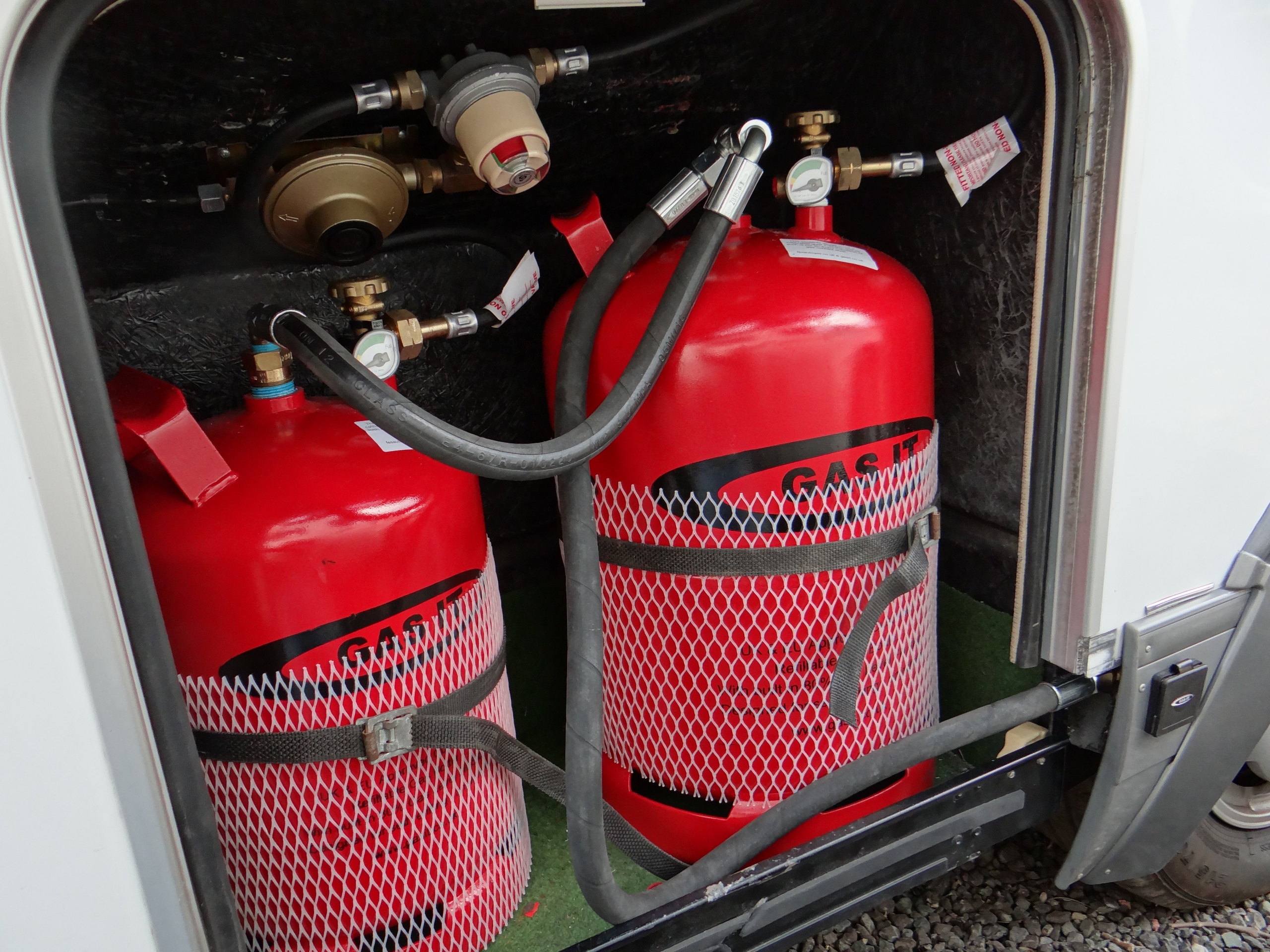
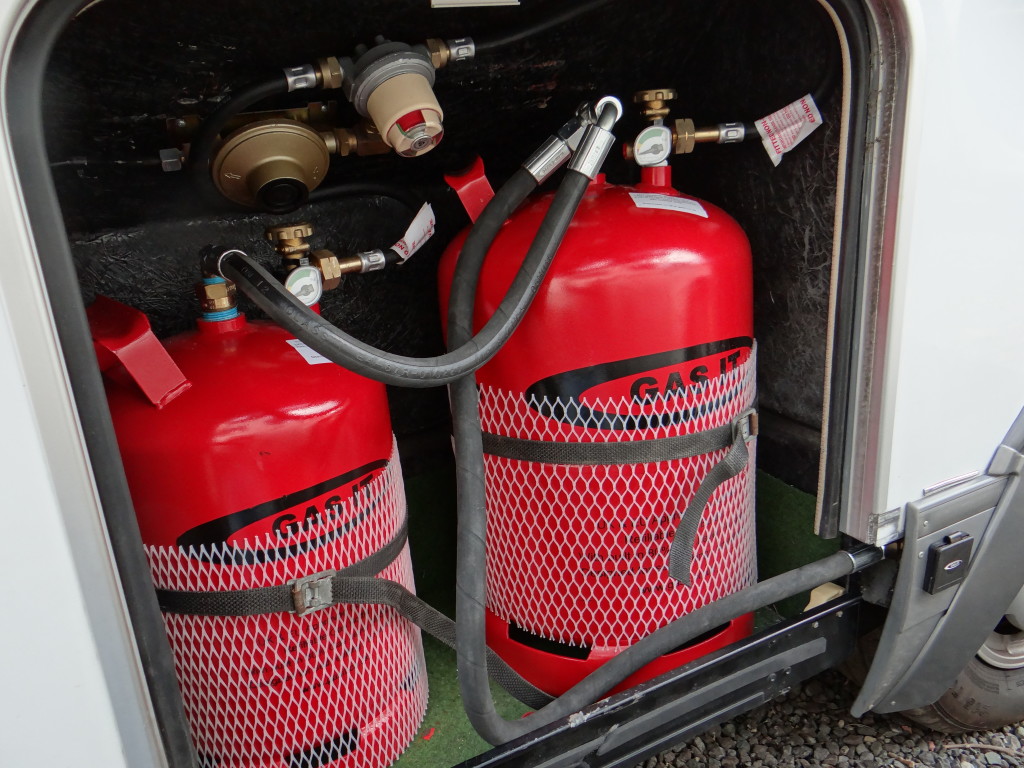
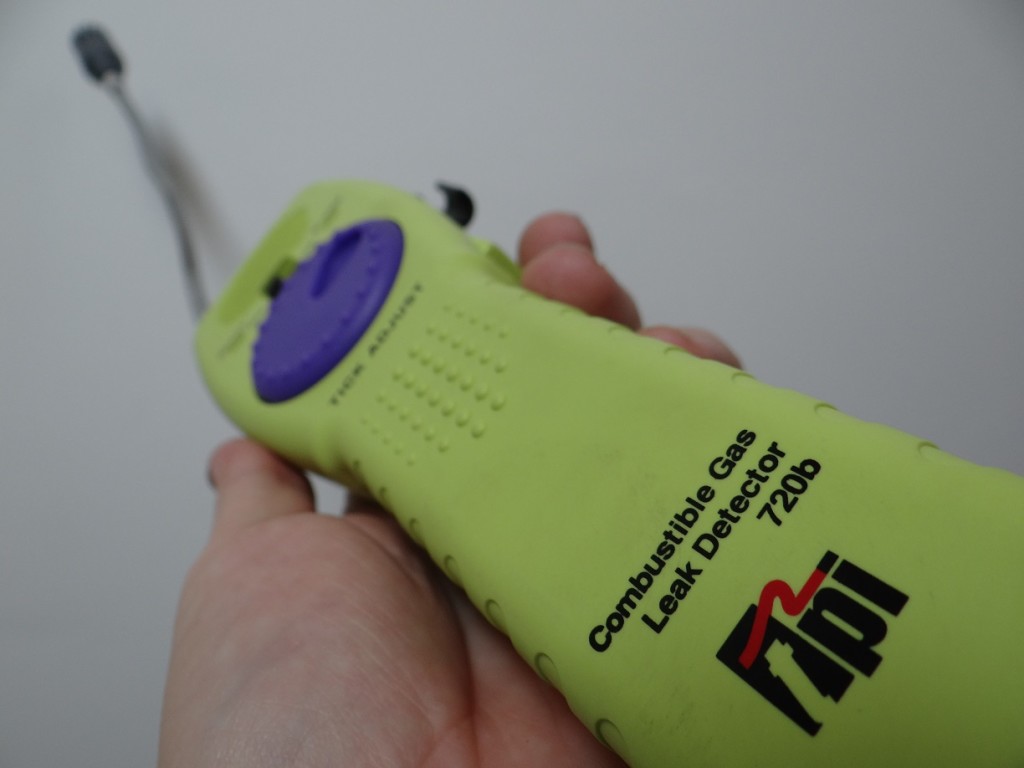


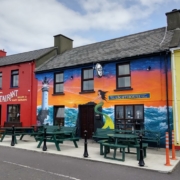
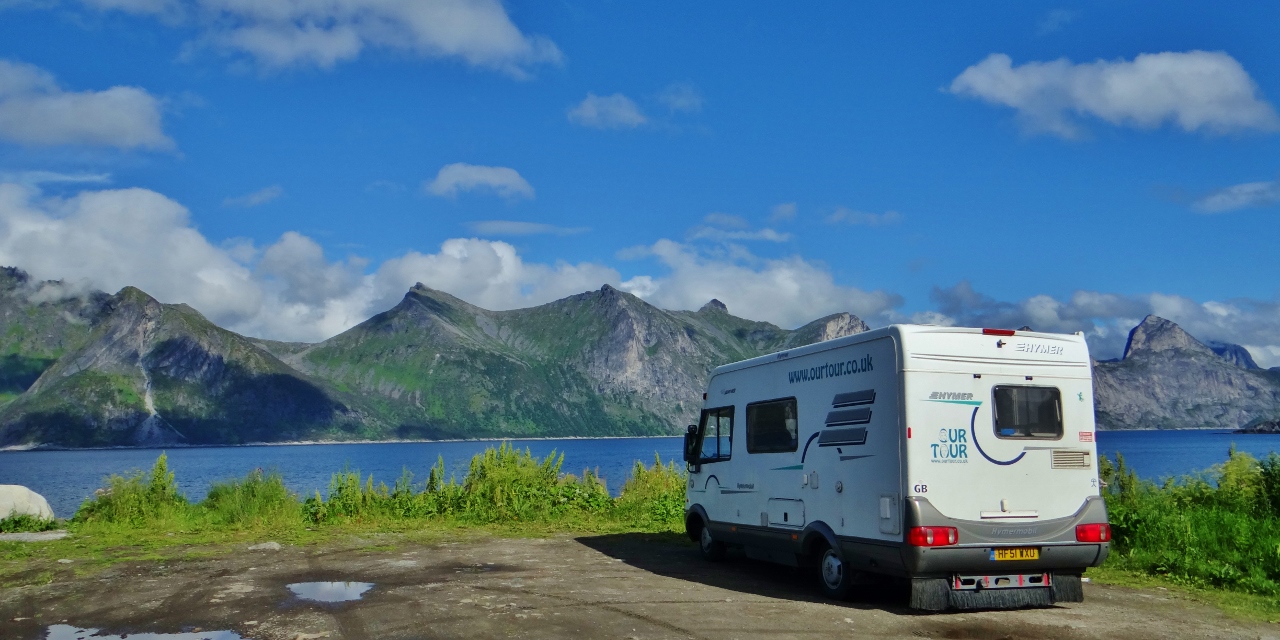
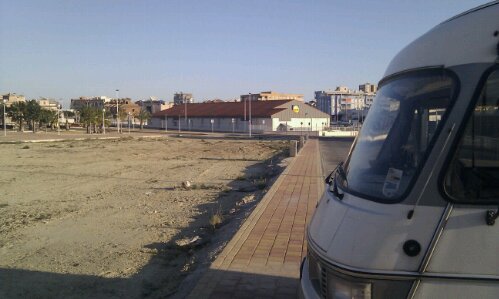
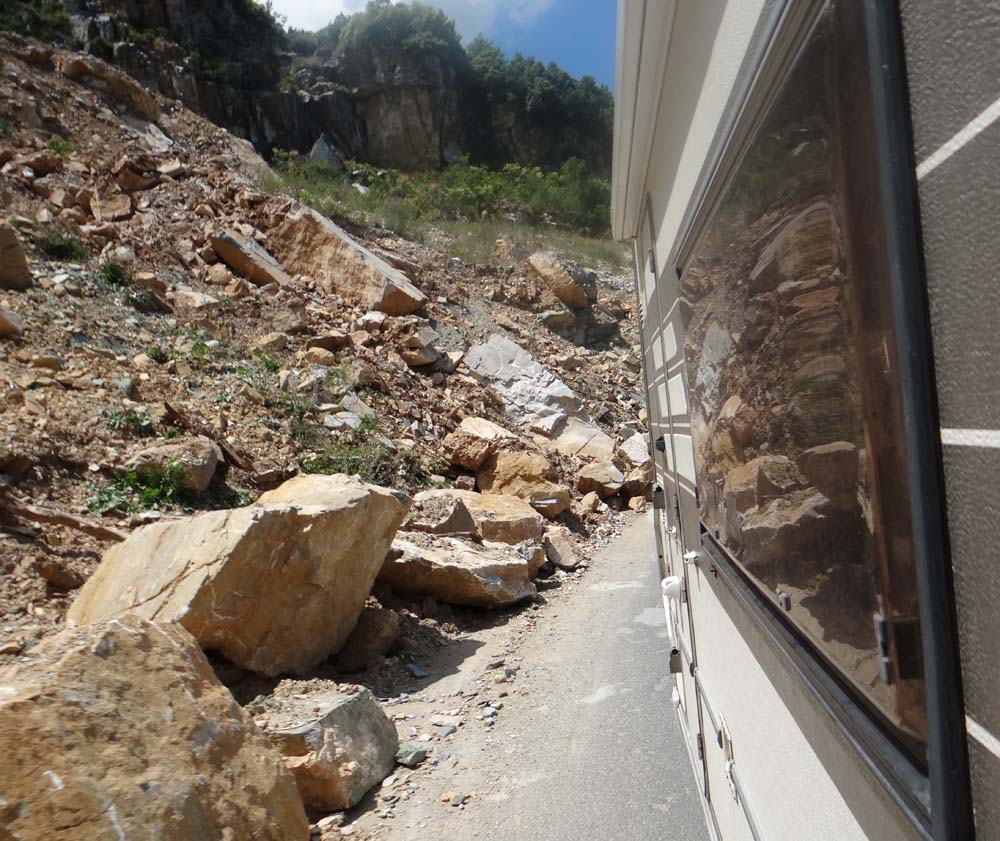




How does it self fill?
Ahah! All gas systems are refillable, only normally you have to pay someone else to do it, taking your bottle to them and swapping for one 80% full (any fuller risks busting the bottle or valves as it can only handle so much pressure internally). With these kits, you leave the bottles always in place in the van, and fill them yourself using an LPG ‘gun’ at a petrol station which flogs autogas. The bottles have an 80% safety cut off valve built in, so are safe to fill yourself, Hence ‘self-refillable’. Cheers, Jay
The 80% is to ensure that the liquid becomes gaseous in the tank allowing gas to come out at the cooker etc and not liquid LPG. If it was liquid it would expand quickly which is very dangerous.
Hi both. We are on our 6th van in 20years of this marvellous way of life we all enjoy, and all we have had refillable LPG systems installed. Also up until our present m/hme, we have always had diesel heating installed, preferring Webasto to the Ebesbatcher(?) system. No doubt that dsl heating is streets ahead of gas and when travelling in top of Scandinavia and old Russia, supplies are always within easy reach at gas stations. Best wishes. Ed
Wow, thanks for writing Eddie, sounds like you guys have been doing some serious, serious adventuring.
We came across the Webasto system when eyeballing narrow boats to move into (decided to buy bricks and mortar to speed up next travels instead). Sounded like a cracking system.
We’ll not be getting quite as adventurous as you guys (as in we’ll be lolling around in luxury) so we’re thinking LPG will be reasonably available. Diesel heating in a diesel-engined vehicle makes a lot of sense though.
Cheers again, Jay
As GasIT haven’t bothered with instructions I suspect they’ll now provide a link to your video with every purchase. Could be worth a few pence in royalties…
Your new van is slowly turning into Swiss cheese. How many more holes?
Oh, and can you remind me, how many days now?
Nice thinking Dave, like it! Not sure my video would be quite the ‘definitive guide to GasIT’ installation they might want though!
No more holes, that’s the lot, we’ll lose structural integrity if we take the hole saw to it one more time… Can’t think of anything else to bolt onto it anyway? :)
Lost count of the number of days, 30 something working days, about 6 weeks before we leave. About enough time to get those shelves put up in the wardrobe I’ve been putting off!
Cheers, take it easy, Jay
18:40, Ahhh ya Monkey!! LMAO! :-) How very brave of you to video your work, when I fitted our underslung system, I swore like a trooper most of the time! Great video Jay, I was looking forward to it. Yes, the guys at Gas it sales are very good, then they just send you the stuff & expect you to know what your doing. How much more would we think of thier customer service if they called you 3 days later to see if you got all the kit OK & did you need any tec help over the phone? Ah well…utopia land again. Seriously, I would ask a “competant person” ACOPS or CORGI to give it the ‘once over’, just to be sure it’s all pukka, I’m sure it is, looks good to me.
So…your hanging up the battery drill, that’s a shame, we all wanted to learn EVERY aspect of Zegan modification :-). To date Iv’e drilled 11 x 13 mm holes, 8x6mm holes, 4x11mm holes & added circa. 100 screws of different lengths, and Iv’e only done 600 miles :-) Good luck with all the other ‘little bits’ you do not document (and there are hundreds, I know!) Kind regs…Wayne & Angie.
Cheers guys! Hmmm, I’m pondering a pro check, but I’m not sure quite what they will check. I can check for leaks using the spray they provide (or some soapy water). I’ve made no change to the regulator or low pressure side. Hmmm, more pondering needed. Think I’ll do a small fill and leak test and see how confident I am after. I did remove and refit the LPG tank on Dave (fewer connections, same principle) and a chap (called Dave as it happens) came to test it, using a pressure tester on the LP side, but soapy water on the HP joints? Hmmm…
Hi Jay and Ju
As this is my first comment to your blog you don’t know me BUT having read much of your site feel like I know you both !
We are really inspired by your wonderful life and are now on count down to our great life adventure… Although we are very much in the early stages of planning we feel like a “Life-Changing” challenge WILL happen with-in two years.
Your blog has been an amazing source of information and I am sure you will see us on here again soon and look forward to following your adventures in the Alps….
When we get our van we really do want a “set up” to travel all weather’s so hence the careful planning…
My question (being a novice) is ….. since you are travelling to the Alps do you anticipate any freezing of the regulator or the bottles. Is the storage area of the gas bottles heated? Does it need to be?
The LPG you get on the European continent Propane LPG or Butane / Propane mix which there is some talk about on the internet. Do the LPG filling sites state if it is Propane or Propane mix?
Maybe quite a complicated question for my first off! But we are planning on cold climates during our touring. A few years ago we were in Slovakia for a holiday in a chalet where the temperature dipped to -30 C and we had to wait till the temp rose to -18 C before we could start the diesel car ! We would need to ensure we had some heating while we waited :)
Look forward to your reply
And Looking forward to our adventures….:)
Whoa, what a fantastic question! Answer: dunno, sorry. I never looked if they stated how much butane they pop in there. My guess is if you’re filling up in colder areas in winter, the locals would reduce the butane proportion but I really have no idea folks. Give motorhomefacts.com a go, the collective knowledge on that forum is astounding. Cheers, keep planning and pushing! Jay
Hi,
As someone who uses propane for cooking in the house, with the bottle open to the elements, in one year down to -16C, I’ve never had a problem in 40 years with gas supply. So with bottles fairly well protected in a motorhome I think you could go much lower.
On another note just pricing up for said kit that you’ve installed, the red bottle kit was £350 and the yellow bottle kit £650, that’s a lot of French wine I could buy with the difference.
Regards,
Robert
Hi Robert
Thanks fella!
I **think** Tim was considering the fact the butane portion of the LPG mix will stay liquid below zero, so with each LPG fill you’ll gradually lose capacity for butane in your system unless you get somewhere above zero and empty the bottles?
Yep, Gaslow kit bought direct from them wasn’t cheap. Some resellers might do it a bit cheaper if you shop around, but yes, GasIT were significantly cheaper!
Cheers, Jay
Jay, you are a superstar. I have watched this video 27 times now. I have a very similar gas locker so I bought the same equipment with one exception – I’ve gone for 2 x 11kg bottles and you were right – it’s a bit of a squeeze ! I am now 4 days into the 2 hour fitting process !!!! I’ll just watch the video one more time……………..
Ooooh ya monkey x x #MHTT
Push on Phil, just literally push the swines in there! :-)
I also have a 2001 Hymer B544 motorhome and intend to fit the exact same gasit system used by you to my wagon, can you please advise me on the sizes of the fill pipes you used?
Hi Graham. We spoke to the guys at Gas-it and they advised us of the sizes for bottles etc as our van already had the auto changer in it which affected the system for us. They were really helpful, so probably best to speak to them first as our set up might not be the best for you.
Cheers Julie
Hi Ju and Jay, and obviously Charlie
I fitted a couple of Gasit bottles to my van last year. This year I’m finding that more and more garages are refusing to allow motor homes to use their lpg pumps. The motorhome forums I’ve looked at seem to acknowledge this inconvenient trend. What’s your experiences?
Hi Dave. In about 4 years of touring we’ve only been refused once. That was by a young man who wanted to shut up shop and go on his break. Recently we’ve only filled up a couple of times this trip in France with no issues. The availability of LPG seems to ebb and flow. Back in 2012 there were only a handful of LPG fill up stations in Spain, now there are hundreds. Italy has (according to forum messages – I’ve not verified this) set a different duty rate on has for propulsion to habitation, so some garages are refusing refills but not others. We’ll take it as it comes I guess. Cheers, Jay
I know this was a while ago – I hope you pick this up. Ian from Hilmathehymer here – thinking about fitting a refillable system at some point in the future (probably 2019 now). How do you get on with insurance having fitted the system? Any issues with declaring it? Any certification required? etc.?
Hi Ian. We didn’t have any issues with insurance but I can’t recall whether we declared it or not. The system was subsequently checked by a gas engineer and a certificate issued, but that was around a year later. Apart from the filler side, the system is much like Calor bottles – you just screw them together with interference fits, there’s not that much to get wrong. Cheers, Jay
How long do you find an 11kg bottle lasts before you need a refill. For your typical summer season travelling. So mostly using it for hot water/showers, cooking and refrigeration? Just wondering whether I need two bottles for a new van or can make do just with one?
Rough estimate: 4 or 5 weeks, assuming we weren’t needing to heat the air and never hooked up. Cheers, Jay
Much appreciated. I think I will just go with one 11kg bottle and then top it up every few weeks.
Cracking, best of luck with your travels when they resume Robert. Jay